 Puntarenas Province, Costa Rica.
Puntarenas Province, Costa Rica.
On our first visit to Costa Rica in 2013 after crossing the Panama Canal, our first stop was Puntarenas. Back then, we opted for a jungle cruise and train ride. We had so much fun on the jungle cruise, we elected to do it again. Fortunately for us, that excursion was sold out by the time we went to reserve our excursions for the trip. It was indeed fortunate as we elected instead to visit Natuwa. We would have missed a visit to a fascinating place.
A 45 minute bus ride from the cruise ship docks at Puntarenas brought us to a wildlife sanctuary known as Natuwa. The birds and animals there are typically recovered from the wild and are cared for as they have some disability that keeps them from living a normal life in the wild. Birds and animals are kept in enclosures, however the large number of beautiful scarlet macaws, like the one in the opening image, and other birds native to Costa Rica have found a shelter and friendly people to come and visit. In the trees above the refuge we saw many of these wild birds taking advantage of a protected area, but still living in the wild and free to come and go as they please.
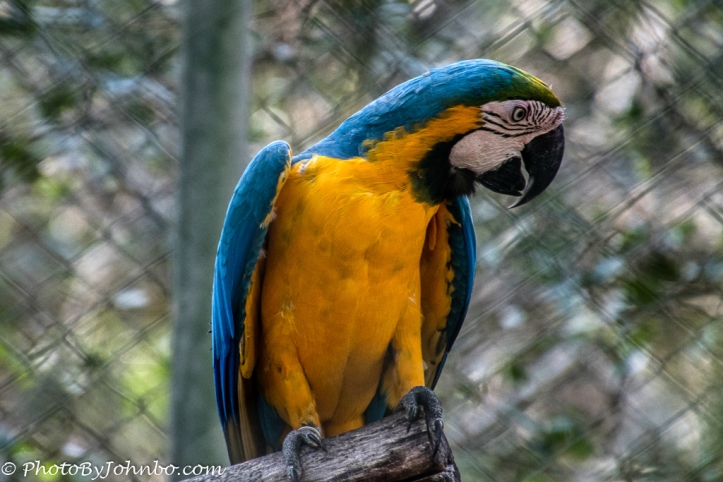 The bird and animal guests are kept in enclosures during their time of rehabilitation to be returned to the wild, unless they will no longer be able to survive in the jungles of Costa Rica. Those who can’t survive on their own will be permanent guests of the facility. This blue and gold macaw is one of many tagged and kept in captivity for its own protection.
The bird and animal guests are kept in enclosures during their time of rehabilitation to be returned to the wild, unless they will no longer be able to survive in the jungles of Costa Rica. Those who can’t survive on their own will be permanent guests of the facility. This blue and gold macaw is one of many tagged and kept in captivity for its own protection.
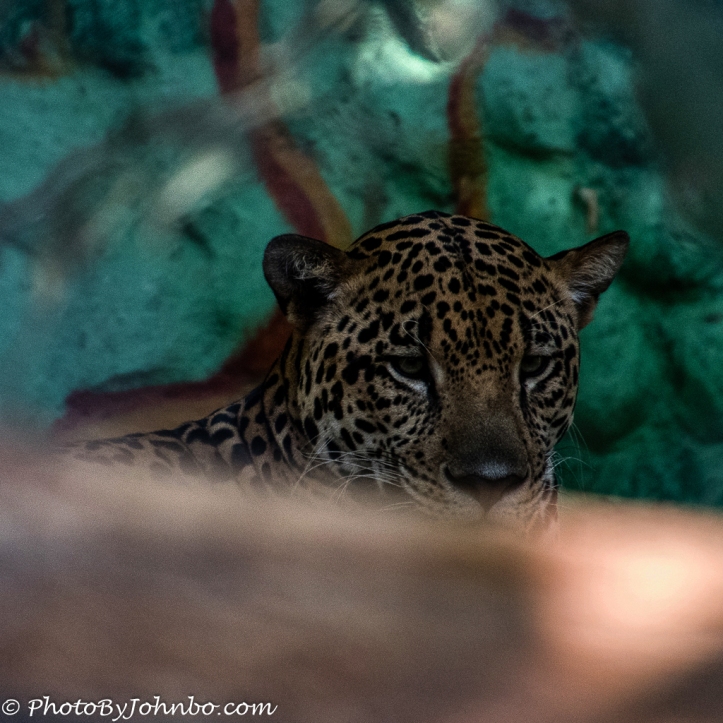 Though known around the world for its large quantity and variety of macaws in rehabilitation, the sanctuary now houses several species of land animals as well, all kept in simple chain link enclosures. This jaguar is a youngster who kept to himself in the back of his enclosure. This was, unfortunately, the best image I could capture as he rested high on a ledge in his enclosure.
Though known around the world for its large quantity and variety of macaws in rehabilitation, the sanctuary now houses several species of land animals as well, all kept in simple chain link enclosures. This jaguar is a youngster who kept to himself in the back of his enclosure. This was, unfortunately, the best image I could capture as he rested high on a ledge in his enclosure.
This spider monkey was attracted to something about one of the cruise ship guests and studied intently while he happened to be hanging on the fence directly in front of me. There were several varieties of monkeys in the care of the technicians who operate the sanctuary.
Here’s a tip for photographers. Sometimes you can ignore fences. The lens on my camera was far too large to insert in the opening of the chain links. Cell phone and point and shoot cameras can position the lens to shoot in the openings of the fence. People with larger lenses on their cameras aren’t out of luck, however. If you pick a subject that’s back from the fence some distance and then set the camera for a large lens opening, focus on the subject, and take the shot. The fence you are shooting through will “magically” disappear as in this image above.
 That technique doesn’t always work, especially when in this case, the subject was a little too close to the fence for the camera to completely “defocus” on the fence. Still, this portrait of a macaw at least allowed me to demonstrate how the technique works, and the photo still turned out acceptably for me.
That technique doesn’t always work, especially when in this case, the subject was a little too close to the fence for the camera to completely “defocus” on the fence. Still, this portrait of a macaw at least allowed me to demonstrate how the technique works, and the photo still turned out acceptably for me.
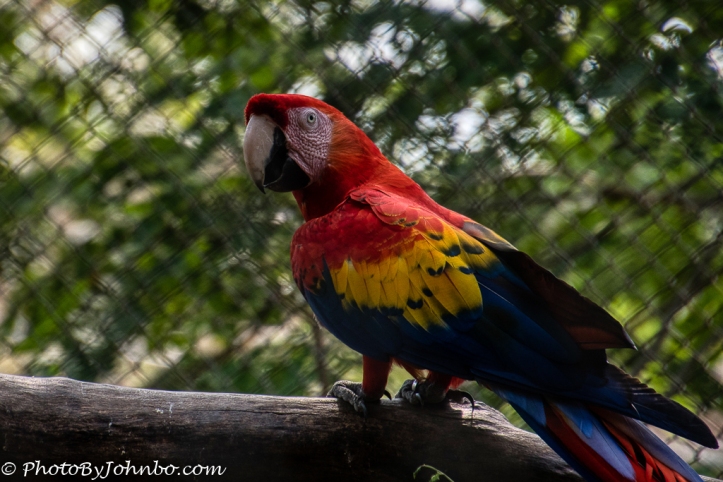 Another image of a scarlet macaw inside a sanctuary fence again demonstrates the technique of “shooting through” the fence. Unfortunately, there’s no easy way to eliminate the pattern of the fence in the background without a lot of work in a program like Photoshop.
Another image of a scarlet macaw inside a sanctuary fence again demonstrates the technique of “shooting through” the fence. Unfortunately, there’s no easy way to eliminate the pattern of the fence in the background without a lot of work in a program like Photoshop.
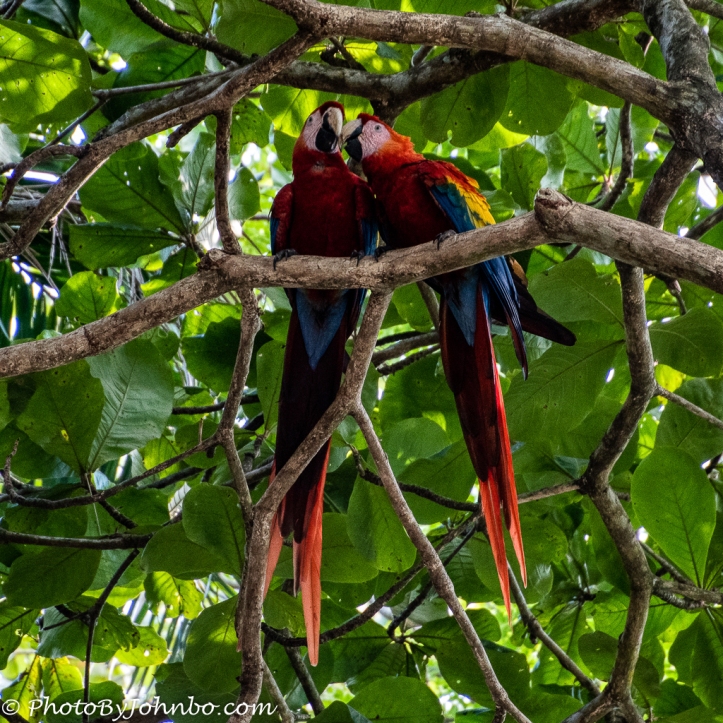 As I noted in the opening of this post, the sanctuary attracts wild macaws who, like this pair, come and go as they please. There were plenty of wild birds to capture in the sanctuary whose images were captured with a natural background instead of a chain link fence.
As I noted in the opening of this post, the sanctuary attracts wild macaws who, like this pair, come and go as they please. There were plenty of wild birds to capture in the sanctuary whose images were captured with a natural background instead of a chain link fence.
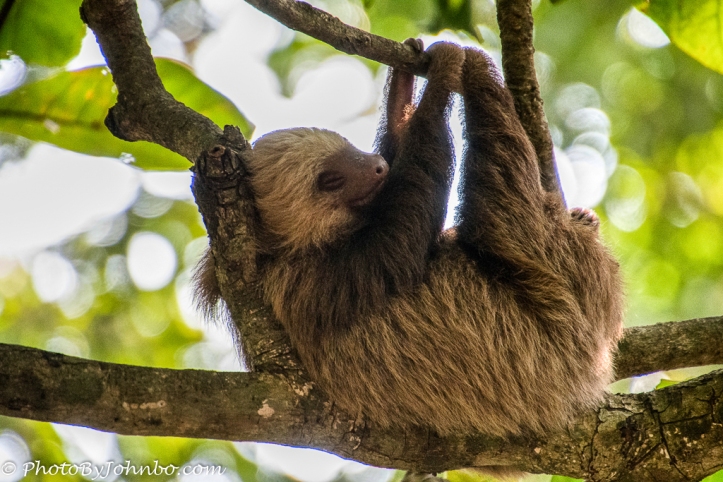 I conclude this post with an image of a three-toed sloth sleepily “hanging around” the park. This juvenile sloth was not caged, but I never did find out if it was truly wild or simply being allowed to live outside a fenced area as it matured. I submit for your viewing enjoyment, images in the form of a gallery so that you, dear reader, can navigate through them in an enlarged format for better viewing. Click on an image to enlarge and scroll through the set.
I conclude this post with an image of a three-toed sloth sleepily “hanging around” the park. This juvenile sloth was not caged, but I never did find out if it was truly wild or simply being allowed to live outside a fenced area as it matured. I submit for your viewing enjoyment, images in the form of a gallery so that you, dear reader, can navigate through them in an enlarged format for better viewing. Click on an image to enlarge and scroll through the set.
John Steiner

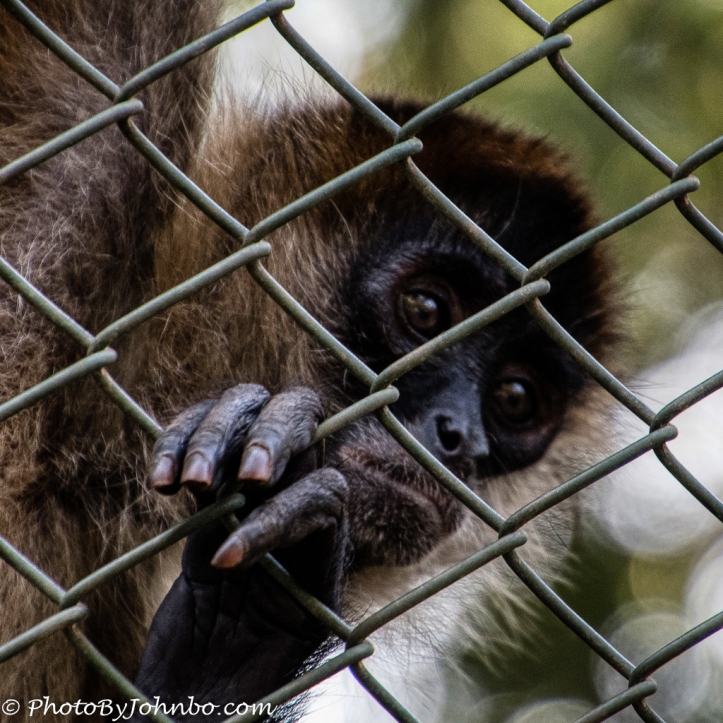












Always sad to see such magnificent creatures confined to captivity, but grateful that in this case it really is with their best interest at heart.
Indeed. The cages are designed not for appearance like in a zoo, but for the animal’s protection.
What a beautiful collection of pics! A worthy destination…
Thanks. We were really happy with our choice.